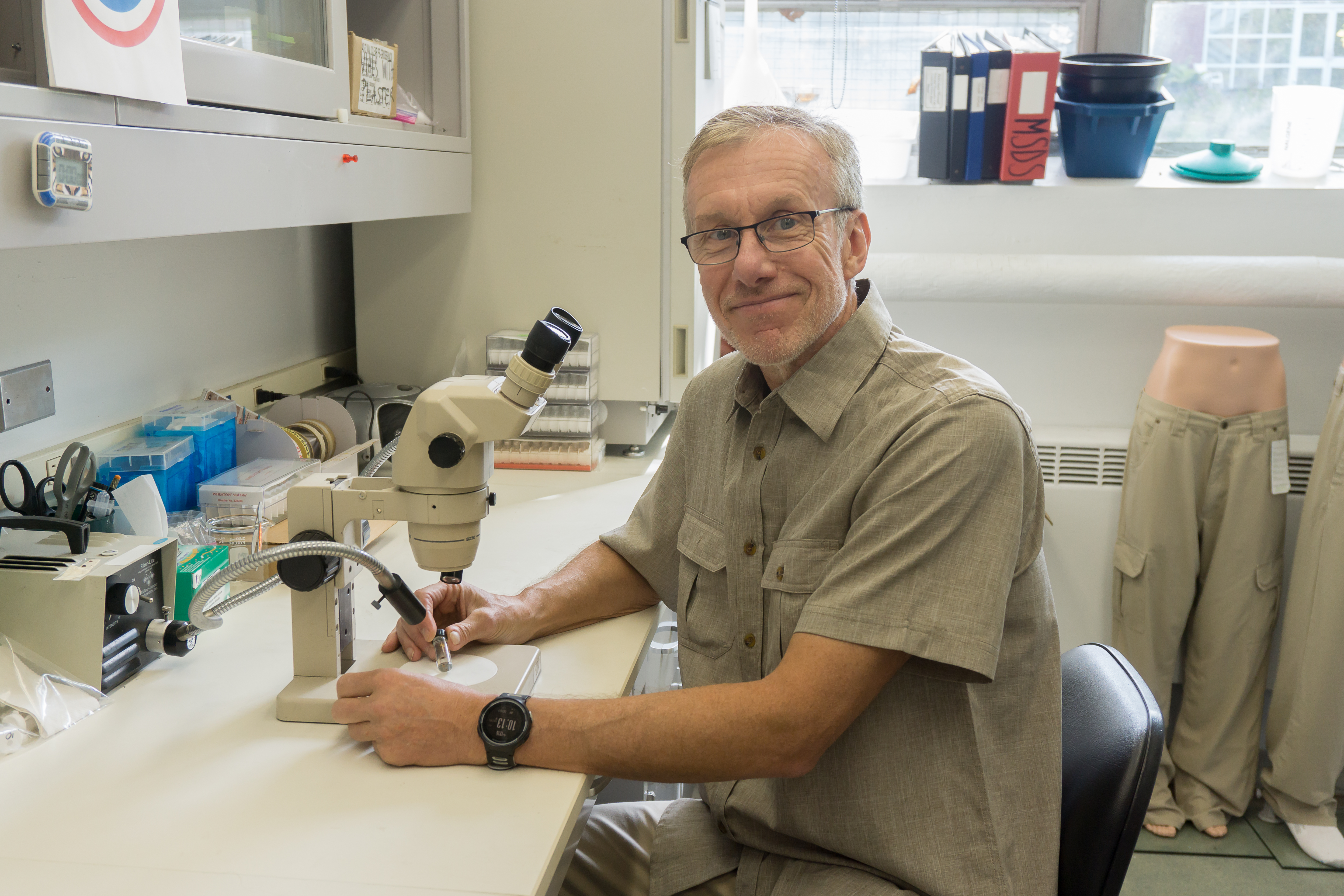Professor Thomas Mather shares his research on lyme disease in ticks. Photos by Autumn Walter.
Sitting behind his computer, Thomas Mather opened a website that allows him to view forms sent in by people who believe they have found a tick that may carry Lyme disease. Mather, upon opening one of the forms, was able to identify that the insect in question was not a tick, and then was able to respond to the individual and assure that there was no need to worry about contracting Lyme disease.
Reviewing reports of potential tick encounters is just one way Mather, a professor of entomology at the University of Rhode Island, is able to help educate the community about ticks and the diseases they carry.
The website Mather oversees, tickencounter.org, allows individuals from anywhere in the United States to fill out a form that describes the tick and attach an image of the tick to the form. These individuals are referred to as “tickspotters.” Mather then reviews all submitted forms and responds to those who sent in the forms. The service is free for people to use.
“This is a really, very valuable tool that we’ve developed,” Mather said.
One reason the website is valuable is because of it’s two-way nature, according to Mather. Individuals are able to receive feedback on ticks they find, and Mather is able to see where in the country people are finding ticks and what type of ticks they are.
Mather said the “tickspotter” program can also help educate people about what types of ticks pose a risk of Lyme disease.
For instance, Mather said that they have received thousands of reports of dog ticks on people who were concerned about contracting Lyme disease. Through tickencounter.org, Mather is able to let people know that dog ticks do not carry Lyme disease. He believes this can be an important way of relieving people’s fears of whether or not they may have contracted Lyme disease.
“It’s [centered] around the concept of ‘what if no one had ever told you
There is no single source of funding for the program, although some funding comes from donations or subscriptions. Mather hopes that people choose to support the program and the services it offers to the community.
“I believe this is probably one of the more important things I’ve developed,” Mather said. “I think it is tremendously important in a ticks-in-more-places world that we live in, that people have access to an expert and that because of the two way nature of it, it’s not just me giving them [information], I’m getting back information. I’m getting back location of ticks through the crowdsourcing, that is invaluable in tracking tick trends. I think it’s a really important thing we’re doing here.”
As Mather mentioned, ticks have proven to be a growing issue in recent years. According to the Center for Disease Control and Prevention (CDC) data, there were over 17,000 confirmed cases of Lyme disease in 2000. By 2010, that number grew to over 22,000 cases. In 2017, which is the last year data is available through the CDC, that number exceeded 29,000 cases.
In addition to the “tickspotters” program, Mather has also been involved with other work regarding ticks and Lyme disease. Mather and his colleagues have also tried to create a vaccine that protects against a variety a tick-borne diseases.
“There’s no vaccination right now,” Mather said. “So, years ago, we embarked on a different path, recognizing that we’d like to make [a vaccine] more broad spectrum protection. If you get a vaccine, we’d like for it to protect you from all of the germs ticks transmit, if at all possible.”
Mather said they are currently narrowing down what proteins, out of the hundreds that ticks carry in their saliva, cause a reaction with humans. Once they find out which protein causes a reaction, they can try to incorporate it into a vaccine.
Another aspect of Mather’s work includes educating people about ticks and the diseases they carry. Mather said many people know at least some information about ticks, but what they don’t know about ticks can still leave them at risk of contracting tick-borne diseases.
“There are things people believe that are incorrect or just incorrect enough to still leave them at risk, and all we need to do is potentially tweak it a little bit so they’re correct enough instead of not correct enough,” Mather said.
Mather also writes blogs on tickencounter.org and has spoken on news stations as a means of educating others about ticks and the diseases they carry.

